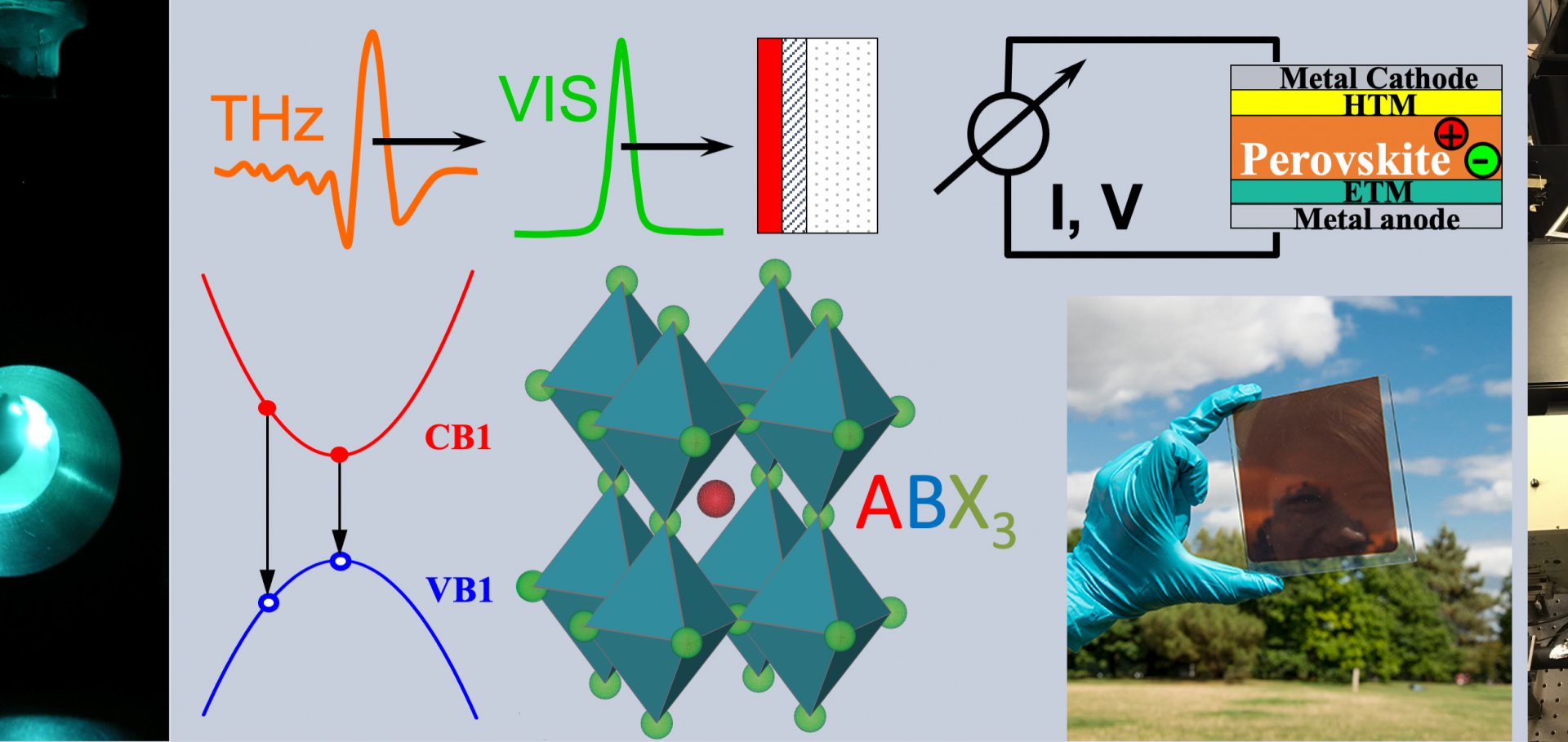Towards Understanding Long-Range Charge Carrier Transport in 2D Perovkites
Atomistic understanding of the coherent interface between lead iodide perovskite and lead iodide
Abstract:
Metal halide perovskite semiconductors have shown great performance in solar cells, and including an excess of lead iodide (PbI2) in the thin films, either as mesoscopic particles or embedded domains, often leads to improved solar cell performance. Atomic resolution scanning transmission electron microscope micrographs of formamidinium lead iodide (FAPbI3) perovskite films reveal the FAPbI3:PbI2 interface to be remarkably coherent. It is demonstrated that such interface coherence is achieved by the PbI2 deviating from its common 2H hexagonal phase to form a trigonal 3R polytype through minor shifts in the stacking of the weakly van-der-Waals-bonded layers containing the near-octahedral units. The exact crystallographic interfacial relationship and lattice misfit are revealed. It is further shown that this 3R polytype of PbI2 has similar X-ray diffraction (XRD) peaks to that of the perovskite, making XRD-based quantification of the presence of PbI2 unreliable. Density functional theory demonstrates that this interface does not introduce additional electronic states in the bandgap, making it electronically benign. These findings explain why a slight PbI2 excess during perovskite film growth can help template perovskite crystal growth and passivate interfacial defects, improving solar cell performance.Chloride-based additive engineering for efficient and stable wide-bandgap perovskite solar cells
Abstract:
Metal halide perovskite based tandem solar cells are promising to achieve power conversion efficiency beyond the theoretical limit of their single-junction counterparts. However, overcoming the significant open-circuit voltage deficit present in wide-bandgap perovskite solar cells remains a major hurdle for realizing efficient and stable perovskite tandem cells. Here, a holistic approach to overcoming challenges in 1.8 eV perovskite solar cells is reported by engineering the perovskite crystallization pathway by means of chloride additives. In conjunction with employing a self-assembled monolayer as the hole-transport layer, an open-circuit voltage of 1.25 V and a power conversion efficiency of 17.0% are achieved. The key role of methylammonium chloride addition is elucidated in facilitating the growth of a chloride-rich intermediate phase that directs crystallization of the desired cubic perovskite phase and induces more effective halide homogenization. The as-formed 1.8 eV perovskite demonstrates suppressed halide segregation and improved optoelectronic properties.Photovoltaic performance of FAPbI3 perovskite is hampered by intrinsic quantum confinement
Abstract:
Formamidinium lead trioiodide (FAPbI3) is a promising perovskite for single-junction solar cells. However, FAPbI3 is metastable at room temperature and can cause intrinsic quantum confinement effects apparent through a series of above-bandgap absorption peaks. Here, we explore three common solution-based film-fabrication methods, neat N,N-dimethylformamide (DMF)–dimethyl sulfoxide (DMSO) solvent, DMF-DMSO with methylammonium chloride, and a sequential deposition approach. The latter two offer enhanced nucleation and crystallization control and suppress such quantum confinement effects. We show that elimination of these absorption features yields increased power conversion efficiencies (PCEs) and short-circuit currents, suggesting that quantum confinement hinders charge extraction. A meta-analysis of literature reports, covering 244 articles and 825 photovoltaic devices incorporating FAPbI3 films corroborates our findings, indicating that PCEs rarely exceed a 20% threshold when such absorption features are present. Accordingly, ensuring the absence of these absorption features should be the first assessment when designing fabrication approaches for high-efficiency FAPbI3 solar cells.


